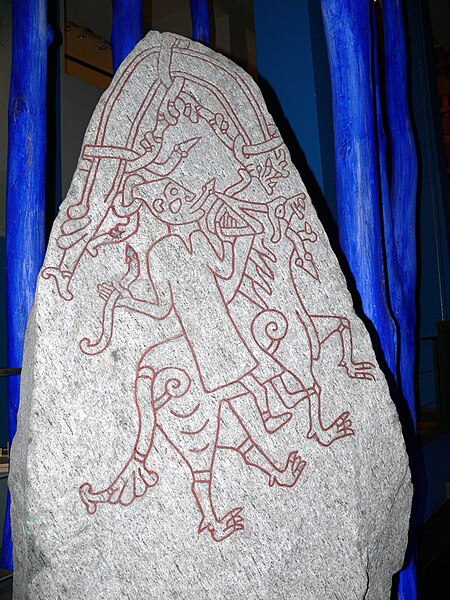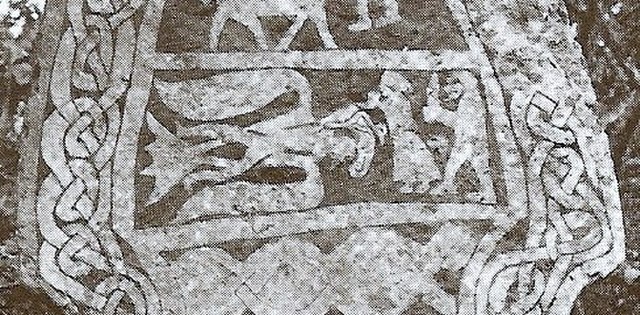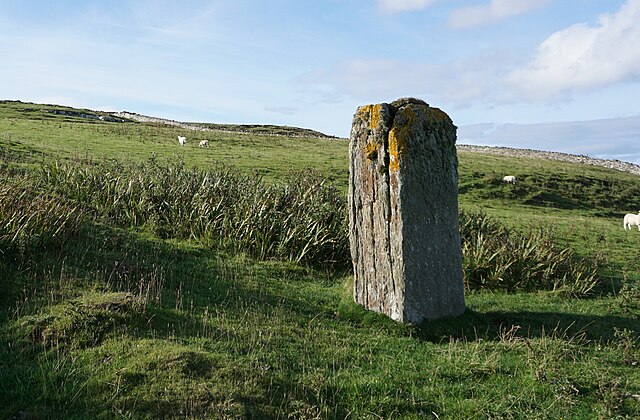In Norse mythology, Auðumbla is a primeval cow. The primordial frost jötunn Ymir fed from her milk, and over the course of three days she licked away the salty rime rocks and revealed Búri, grandfather of the gods and brothers Odin, Vili and Vé. The creature is solely attested in the Prose Edda, composed in the 13th century by Icelander Snorri Sturluson. Scholars identify her as stemming from a very early stratum of Germanic mythology, and ultimately belonging to larger complex of primordial bovines or cow-associated goddesses.
Auðumbla licks free Búri as she produces rivers of milk from her udders in an illustration from an Icelandic 18th century manuscript of the Prose Edda
Audumbla milk company in Stockholm 1908. This house was also Alfred Nobel's birthplace.
The primordial being Ymir suckles at the udder of Auðumbla as she licks Búri out of the ice in a painting by Nicolai Abildgaard, 1790
A jötunn is a type of being in Germanic mythology. In Norse mythology, they are often contrasted with gods and other non-human figures, such as dwarfs and elves, although the groupings are not always mutually exclusive. The entities included in jötunn are referred to by several other terms, including risi, þurs and troll if male and gýgr or tröllkona if female. The jötnar typically dwell across boundaries from the gods and humans in lands such as Jötunheimr.
10th-century picture stone from the Hunnestad Monument that is believed to depict a gýgr riding on a wolf with vipers as reins, which has been proposed to be Hyrrokkin.
The Gotlandic image stone Stora Hammars III is believed to depict Odin in the form of an eagle (note the eagle's beard), Gunnlöð holding the mead of poetry, and Suttungr.
The Yetnasteen - a standing stone in Rousay in Orkney, held in local folklore to be a giant or jötunn that has been turned to stone.






